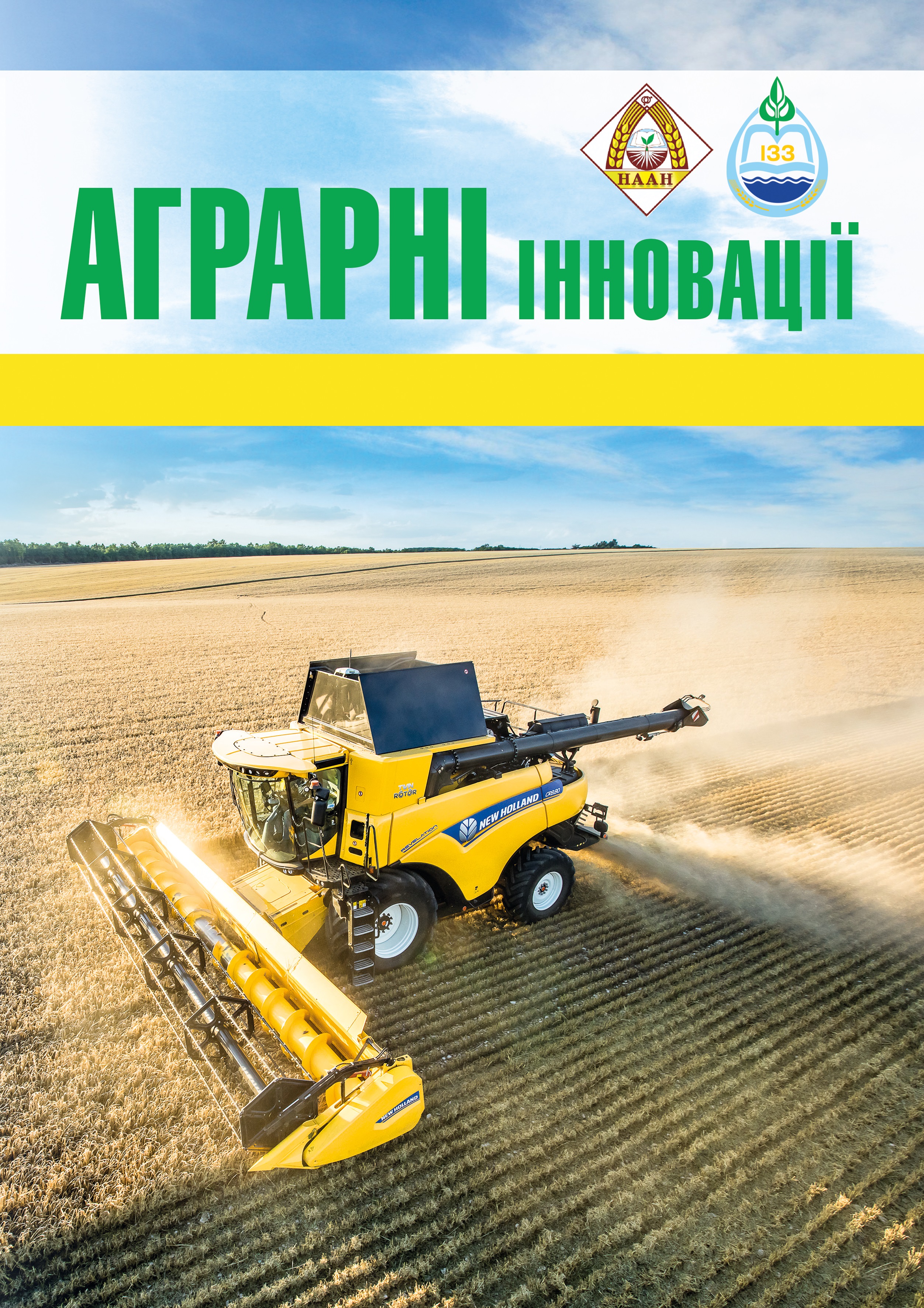MODELS OF CORN HYBRIDS OF DIFFERENT MATURITY GROUPS FAO 150–490 FOR IRRIGATED CONDITIONS
Abstract
Purpose. To substantiate morphophysiological and heterozosis models of high yield hybrids of maize FAO 150-490 for irrigation conditions and to create appropriate genotypes with specific adaptability to agroecological factors. Methods. The general scientific, special selection genetic, computational and comparative research methods were used. Results. The results of long-term study of maize hybrid models of different maturity groups within the conditions of irrigation are presented. The basic parameters of maize hybrid models of different FAO groups were determined. The parameters of heterozosis models are determined and the lines with high combining ability were created, which are involved in the pedigreeof early-ripening, early ripe medium, mid-ripening, middle-late and late groups of maturity of newly created hybrids. The results of the new hybrids response to irrigation methods and regimes are presented. It was found that FAO 190 hybrids have stable yields independently of different irrigation modes. The use of these hybrids is appropriate for the water-saving irrigation modes on irrigated lands with a low groundwater line. Among the middle-hybrids (FAO 300–390) the strong reaction in hybrids growing environmental gradient has appeared. The yield of this hybrids type falls dramatically under water-saving irrigation modes. There were defined corn hybrids of intensive type “Arabat”, “DN Getera”, “DN Anchlag” 15–17 t/ha during the drip irrigation and sprinkling irrigation within Ingulets and Kahovsky irrigated lands. There is no practical need to grow this type of hybrids on irrigated lands with a low groundwater line and water-saving condition as far as this type of technology leads to the strong yield loss therefore they become non-competitive with modern FAO 190–290 hybrids. Conclusions. There new innovative FAO maize hybrids 150–490 were created for irrigated cultivation on the south of Ukraine, which are possessing a complex of economic and valuable features and are able to form high yields during the irrigation (11–17 t/ha). The differentiating ability of the environment within high soil fertility is more than in close-extreme conditions where environmental factors cause a leveling effect on the phenotype’s signs implementation of FAO400–490 hybrids. The morpho-biological features that determine corn yield are steadily implemented only at high soil fertility. For this reason the phenotype selection is reliable only in favorable conditions. The flexible hybrids adapted to a wide range of external conditions within irrigation’s intensive technologies give way to genotypes productivity with a narrow adaptability.
References
2. Munsch M.A., Stamp P., Christov N.K. et al. Grain Yield Increase and Pollen Containment by Plus-Hybrids Could Improve Acceptance of Transgenic Maize. Crop Sci. 2010. Vol. 50, No. 3. P. 909-919. DOI: 10.2135/cropsci2009.03.0117.
3. Vozhegova R.A., Lavrynenko Yu.O., Hlushko T.V. Productivity of maize hybrids of different FAO groups depending on condition of irrigation and dosage of fertil-izers in the southern steppe of Ukraine. Agric. Sci. Pract. 2014. Vol. 1. No. 3. P. 62–68. DOI: 10.15407/agrisp1.03.062.
4. Troyer A.F. Background of U.S. Hybrid Corn II: Breeding, Climate, and Food. Crop Sci. 2004. Vol. 44, No. 2. P. 370-380. DOI: 10.2135/cropsci2004.3700.
5. Мустяца С. И., Мистрец С. И. Использование зародышевой плазмы гетерозисных групп БССС и Рейд Айодент в селекции скороспелой кукурузы. Кукуруза и сорго. 2007. № 6. С. 8–12.
6. Черчель В.Ю., Марочко В.А., Таганцова М.М. Обґрунтування індексу співвідношення висоти прикріплення верхнього качана до висоти рос-лин гібридів кукурудзи (Zea mays L.). Plant Varieties Studying and Protection. 2014. № 2. C. 40–44. DOI: 10.21498/2518-1017.2(23).2014.56127.
7. Домашнев П.П., Дзюбецький Б.В., Костю-ченко В.И. Селекция кукурузы. Москва : Агропромиздат, 1992. 204 с.
8. Ушкаренко В.А., Лазарев Н.Н., Голобо-родько С.П., Коковихин С.В. Дисперсионный и корре-ляционный анализ в растениеводстве и луговодстве. Москва, 2011. 336 с.
9. Дзюбецький Б.В., Черчель В.Ю. Сучасна зародкова плазма в програмі з селекції кукурудзи в Інституті зернового господарства УААН. Селекція і насінництво : міжвід. темат. наук. зб. Харків, 2002. Вип. 86. С. 11–19.
10. Mikel M. A. Genetic composition of contemporary U.S. commercial dent corn germplasm. Crop Sci. 2011. Vol. 51, No. 2. P. 592 599. doi: 10.2135/cropsci2010.06.0332






